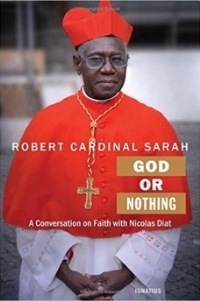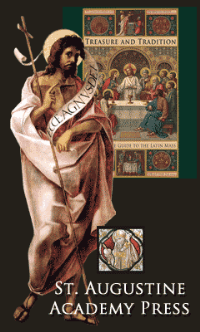
Typical sacrarium in an American sacristy with a sign warning never to pour away the Precious Blood.
From a reader…
It is my understanding that if a Communion host or the precious blood has to be disposed, it is to be poured into water to dissolve/mix with the water, then poured into a sacrarium or into the earth. My question is, what if there is an underground perforated pipe (such as for water drainage) that leads to a sewer? The contents poured into the ground could get into a perforated pipe and drain to an unwanted area. I’m not sure of any cases were this occurs, but i suppose it is a possibility. Thanks.
For those of you in Columbia Heights, the sacrarium is a special sink in a sacristy whose pipe drain goes down into the earth rather than into a septic or sewage system. Anything that has to do with the Eucharist or other blessed objects shouldn’t be put into the sewage system. Rather, it should be put onto or into the ground. Hence, priests would themselves rinse sacred linens for Mass (because their hands are consecrated). After they are rinsed then others can take care of them. The water for the first rinsing would go down the sacrarium or, sacrarium lacking, onto the ground.
There are a couple things to consider.
First and foremost, the Eucharist must never never never be “thrown away”, simply disposed of. That crime incurs an automatic excommunication, the lifting of which is reserved to the Holy See or those confessors to whom the Holy See grants the faculty.
In the Latin Code of Canon Law we find:
can. 1367: Qui species consecratas abicit aut in sacrilegum finem abducit vel retinet in excommunicationem latae sententiae Sedi Apostolicae reservatam incurrit; clericus praeterea alia poena, non exclusa dimissione e statu clericali, puniri potest … A person who throws away the consecrated species or takes or retains them for a sacrilegious purpose incurs a latae sententiae excommunication reserved to the Apostolic See; moreover, a cleric can be punished with another penalty, not excluding dismissal from the clerical state..
The word abicit, abicere, means here “throw away”, and this was clarified by the Pontifical Council for the Interpretation of Legislative Texts, at their plenary session on 4 June 1999, as not … not… being restricted to “throw away” in a spirit of contempt, or intent to do dishonor. It really does mean “throw away”, which is what happens when you put a consecrated Host or the Precious Blood down a sacrarium without first making sure that the substance of the same is first broken down (by dissolving). Precious Blood, of course, should be consumed.
That said, in the case of any objectively sinful act which incurs an excommunication (e.g. throwing away the Eucharist), there are always the circumstances to be considered (e.g., the person’s will and knowledge, external compulsion, fear, etc.).
Redemptionis Sacramentum distinguished different levels of liturgical abuses. The worst are in the category graviora delicata (graver crimes). Among the graviora delicta is throwing away the Eucharist (cf. RS 172). This grave crime is reserved to the Congregation for the Doctrine of the Faith.
To the question.
You have to trust that the sacrarium was made properly and that it is functioning in the intended way.
We are not obliged to tear the church building apart and excavate to verify that the sacrarium pipe is doing its job. Nor do we have to send optics down the pipe. If there is a sacrarium, we can be morally certain that it is doing its work.






 These daily 5 minute podcasts for Lent are intended to give you a small boost every day, a little encouragement in your own use of this holy season and to thank the benefactors who help me and this blog.
These daily 5 minute podcasts for Lent are intended to give you a small boost every day, a little encouragement in your own use of this holy season and to thank the benefactors who help me and this blog.

 From a priest…
From a priest…





 In the wake of last week’s cover of the Rolling Stone, Andrea Gagliarducci in his
In the wake of last week’s cover of the Rolling Stone, Andrea Gagliarducci in his  From a reader…
From a reader…











 020 8133 4535
020 8133 4535



























